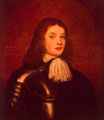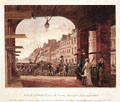The University of Hong Kong
June 7-17, 2013
|
|
The University of Hong Kong June 7-17, 2013 |
Welcome to Philadelphia, the first capitol of the United States and the center of the Revolutionary War against England. We will be looking at the history and literature of the nation's first capital and thinking about the cultural history of the nation.
We will be staying at International House Philadelphia (established 1910), 3701 Chestnut Street
As for Philadelphia, here are a few of the historical sites that we plan on visiting:
- Arch Street Quaker Meeting House
- Independence National Historical Park, including the Liberty Bell and Independence Hall, where the Continental Congress signed the Declaration of Independence
- The National Constitution Center, a museum dedicated to the signing of the United States Constitution.
- Independence Seaport Museum to learn about early sea travel and commerce with China in the 1780s.
- The home and printing office of Benjamin Franklin (Franklin Court)
- The United States Mint and the Federal Reserve Bank of Philadelphia
- Fairmount Water Works (early 19th century), a massive public works project designed to make the city of Philadelphia very clean after the terrible Yellow Fever epidemic struck in the 1790s
- Philadelphia Museum of Art (PMA) (1919-1928)
- Eastern State Penitentiary (ESP) (1829), the first modern prison, designed to rehabilitate the prisoners
- Philadelphia's historic Chinatown
- City Hall (1901) and Love Park
- Philadelphia Academy of Fine Arts (PAFA) (1876)
Here are some some useful links:
- Map of University of Pennsylvania
- Maps of Philadelphia (Regional, Center City, etc.)
- Map of the Philadelphia Phlash, a tourism bus route with convenient stops throughout the city
- Airports: Philadelphia International Airport and the Newark Liberty International Airport
- Amtrak Train (for travel between Newark Liberty Airport and Philadelphia's 30th Street Station)
- MegaBus for bus travel between Philadelphia and New York
What follows is an overview of the history, the literature, and the ideas that we will be considering during our stay in Philadelphia. Happy travels and see you soon.
PART II: INDEPENDENCE

Early maps of Paris, London, PhiladelphiaWhy is the city of Philadelphia laid out as a grid?
London tragedies of 1665 and 1666 and the First Portrait (Map) of Philadelphia, by Thomas Holme (1683)
Colonial investment and "A Letter from William Penn Proprietary Governor of Pennsylvania In America, to the Committee of the Free Society of Traders Of that Province, residing in London. Containing..."
Who is Penn inviting to his colony and why? How does he try to convince them?
Consider the logic of the plantation and colony.
Further Reading: Selections from William Penn and the Founding of Pennsylvania (PDF file); Read pages 58-65, and 72-76

Peter Sir Lely,
Portrait of
William Penn (1666)
What is Quakerism and how did it influence the idea of Philadelphia? Click on icon to the left
William Penn, Preface to George Fox's Journals (1694)
Click on icon to the left; these are excerpts from William Penn's introduction to a leading Quaker's (George Fox's) journals. What are key metaphors or symbols through which Penn introduces the Quaker belief?
Why might the Quakers been so controversial in England?
The Quakers emphasized plainess in style. Do you see evidence of this in Penn's Preface to the Journals of George Fox?
What are the Quaker views on marriage? on violence and war? on slavery?

Benjamin West,
Treaty of Penn
with the Indians
(1771-2)
Philadelphia
Academy of
Fine Arts
Click on icon to the left. How did William Penn reconcile the British King's charter that granted him the territory of "Pennsylvania" (literally, Penn's woods) with the fact that Native American were already living there?
Hand-written Letter to the Indians (Lenni Lenape) (London, 18 October 1681) by William Penn
How would it feel if you received this letter?
Why does Penn sound so friendly? Do you trust his offer of friendship? Why or why not?
Why would the artist Benjamin West decide to paint this picture in 1771 (nearly one hundred years after Penn's arrival in Pennsylvania)?

Portraits of
Benjamin Franklin
Click on icon to the left. How did the printing press help change religious belief, political authority, and philosophies of identity?
Benjamin Franklin (1706-1790) and the Enlightenment philosophy of the printing press
Excerpts from the Autobiography

John Dunlop's broadside
of the
Declaration of
Independence, (1776)
The philosophy of the American Revolution
What is the rationale for revolution in the Declaration?
Declaration of Independence, in Jefferson's Autobiography; here it is with what seem to be quotation marks (?). Here is Jefferson's hand-written draft of the Declaration
Declaration of Independence (1776)
The Articles of Confederation,
The United States Constitution (1787) and
the "Federalist X from The Federalist Papers (1788) by "Publius" (aka. James Madison)
PART III: Struggling for Union

William Birch, City of Philadelphia (1800)
The Yellow Fever of 1793 and the political and social challenges of independence
Philadelphia was the temporary capital of the United States until 1800. The time from 1783 until 1800 was a difficult one. In 1793, the Yellow Fever hit Philadelphia. It was transmitted through the bite of a mosquito, although this was not known until long after. In August to mid-September of 1793, 600 people died (the city's population was about 42,000). Over the next few months, approximately 5,000 more died. For the next few years, people feared the fever.
As a result of the Fever, Philadelphia went to work. The engineer Benjamin William Latrobe built a giant pump where City Hall stands today. The hope was to wash clean the city streets. In the early 1820s, a more effective system called the Fairmount Waterworks was designed and completed, becoming a major tourist attraction for the city. It created a giant reservoir where the Philadelphia Museum of Art stands today.
"Pestilence: Written During the Prevalence of a Yellow Fever,"
Philip Freneau, 1793

Pamphlet WarsSlavery and racial inequality in Philadelphia and the Early United States
During the crisis of the fever, Reverands Richard Allen and Absalom Jones organized the work of many African Americans who stayed behind to help maintain the city, minister to the sick, and bury the dead. Unfortunately, Mathew Carey, a prominent publisher who had fled the city, wrote a libelous pamphlet blaming African Americans for looting the city. Allen and Jones refuted the charges with their own pamphlet that described live in the city during the fever.
Reverand Richard Allen, a freed slave, would be instrumental in the founding of the Mother Bethel, African Methodist Episcopal Church (6th and Lombard).Pamphlet exchange:
Mathew Carey,
A Short Account of the Malignant FeverLately Prevalent in Philadelphia: With a Statement of the Proceedings That Took Place on the Subject in Different Parts of the United States (Jan. 16, 1794)
vs.
Richard Allen and Absalom Jones,
A Narrative of the Proceedings of the Black People, During the Late Awful Calamity in Philadelphia in the Year 1793 and A Refutation of Some Censures Thrown upon them in some late Publications (1794)
John Edgard Wideman's "Fever" from Fever: Twelve Stories (1989)

Eastern State PenitentiaryFrom Public Health to Public Safety: Influential Prison Reforms in Early Republican Philadelphia
Charles Dickens, American Notes, A Journey, "Philadelphia and Its Solitary Prison" (1842) Excerpts from Michel Foucault, Discipline and Punish: The Birth of the Prison (French, 1975; trans. 1977)

Portraits of Abraham Lincoln
Crisis of National Representation
Abraham Lincoln (16th President of the United States), "Second Inaugural Address (4 March 1865)
Thomas Eakins, Portrait of Walt Whitman (1887)
Mourning the President
Walt Whitman (1819-1892), "When Lilacs Last in the Door-yard Bloom'd"
William Still, from the frontispiece The Underground Railroad (1871)The Underground Railroad and the Legacy of African American Community
The Pennsylvania Constitution of 1838 limited voting rights to whites
Excerpt from W. E. B. DuBois, The Philadelphia Negro Chapter 1-4, 18 (1899)
Selection from William Still, The Underground Railroad, "Preface", "Henry Box Brown" (1871)

Centennial World Fair
"The Centennial" World Fair in Philadelphia and the Trauma of War and Slavery
The Exposition celebrated the 100 year anniversary of the United States. 10 million people visited the Fair.
Thomas Eakins of the Philadelphia Academy of Fine Arts (PAFA) painted the controversial The Gross Clinic that depicted a surgery in process. The painting was rejected by the Centennial Exposition's selection committee and not shown in the Exhibitions galleries dedicated to art-- today it is one of the most respected paintings of nineteenth-century American art. Today it hangs in the galleries of the Philadelphia Museum of Art. Dr. Samuel D. Gross, the doctor performing the surgery, was an extremely accomplished doctor of his time who authored several books on medical conditions and procedures, including a manual that helped doctors with amputations during the Civil War.
Listen here to a news story by National Public Radio (NPR) about the recent restoration and display of the painting.